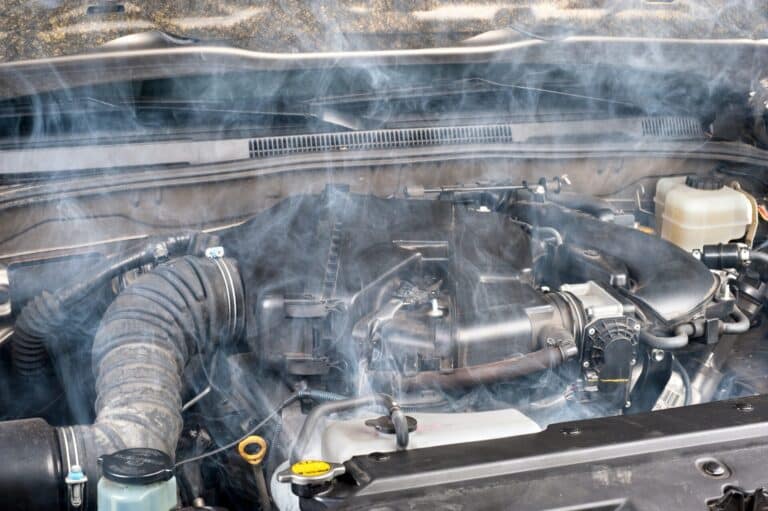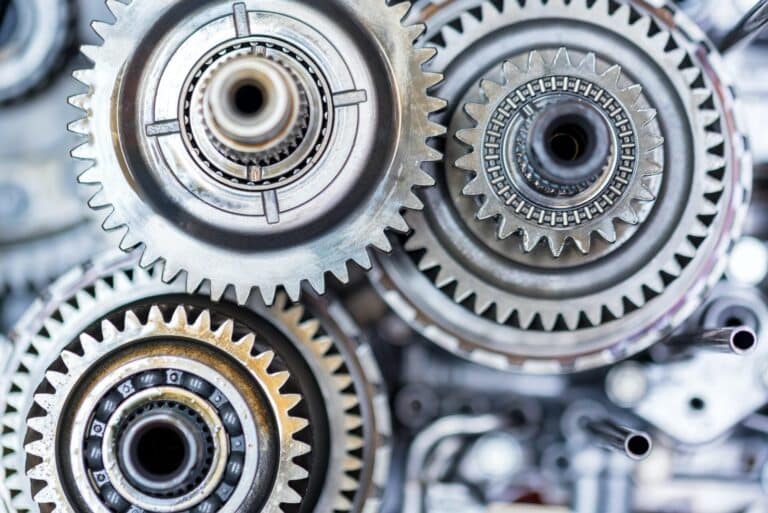Dodge 3.5 High Output Engine (Must Know Things)
A vehicle’s engine is one of the main determinants of a good driving experience.
A good engine will define how well the car will perform on the road. A high output engine generates much power and promises a good road experience.
The Dodge 3.5 high output engine is highly reputable, and reading on, we’ll learn more about it.
The Dodge 3.5L V6 high output engine originated from the 3.3 L V6. First seen inside the 1993 Chrysler Concorde, this engine had 214 horsepower with 5,800 revolutions per minute. It also had 221lb-ft with 2800 revolutions per minute. Compared to other Chrysler engines, this one had the least amount of noise from its mechanical parts.
What Is a 3.5 High Output Engine?
A 3.5 high output engine means the engine has 250 horsepower with 250lb-ft. With this power, the car can move from 0 to 60 mph in just over 8.5 seconds.
The second-generation 3.5L is from aluminum alloy; this made it the greatest performing V6 engine in the world.
It has the highest overall torque and horsepower. The 3.5L also leads in particular torque and the single-engine to ideally run with regular petrol.
The 3.5 high output engine amplifies power by allowing more airflow.
This action happens by reducing induction restriction, increasing flow openings, bigger throttle frame, and greater camshaft lift.
It also involved a complex intake manifold that offered smoother exteriors. In this engine, gas mileage is improved by ten percent and matches Federal emission criteria.
Unlike the regular two, the high output engine features a triple plenum intake manifold.
Additionally, it has undersized runner spigots with a manifold regulation spigot.
These undersized spigots differ from the intake manifold’s pipe length, producing a boost at various engine speeds.
Dependability issues and oil seepages are reduced by coating the aluminum alloys using cast iron.
In process manufacturing, the blocks receive heat treatment and crankshafts from forged steel.
The oil channels are built into the aluminum block to enable quicker movement in high-speed situations.
Dodge 3.5 High Output Engine Specs
The Chrysler EG-series 3.5L has the following specs.
- Engine Type: Spark-ignition 4-stroke
- Fuel Type: Gasoline
- Fuel System: Gasoline indirect injection
- Charge System: Naturally aspirated.
- Valves per Cylinder: 4
- Extra Features: Sequential multi-point fuel injection (SMPI) SOHC, V-60deg
- Emission Control: 3-way catalyst, Lambda-Sensor.
- Cylinder arrangement: V6
- Displacement: 3518 cm3 / 214.8 cui
- Horsepower net: 186.5 kW / 254 PS / 250 hp (SAE net) / 6400
- Torque net: 340 NM / 251 ft-lb / 3800
- Vehicle power to weight ratio net: 107.6 watt/kg / 48.8 watt/lb.
- Vehicle weight to power ratio: 9.3 kg/kW / 6.8kg/PS/15.3 lbs. /hp
- Gearbox: Daimler-Benz 5G-Tronic W5A580
- Transmission type: Automatic
- Number of gears: 5
How Much Horsepower Does A 3.5 High Output Have?
The first generation of the 3.5 introduced in 1993 had 214 horsepower with 5 800 revolutions per minute.
This one had 221lb-ft of torque and 2 8000 revolutions per minute. The second generation of the 3.5 high output engine created about 232 to 253 horsepower.
Although it was usually graded at 250 horsepower since the 232 grade is reserved for medium-sized automobiles, these vehicles had limited air routes. Do you know: What Kind of Speakers Are in a Ram 1500?
Some aftermarket modifications can give the 3.5 engine extra power; they are;
#1. Performance Equipment
There are accessible chips that can increase the horsepower of the engine. They do this by optimizing the electronic efficiency of the car.
One good attribute about these chips is that they increase the automobile’s power without substantially increasing petrol depletion.
In a few cases, the chips can even improve the fuel economy and provide extra horsepower for the car.
#2. Exhaust
Using performance exhaust equipment, you can achieve extra horsepower by changing the exhaust drift.
This equipment ensures that airflow is improved and exhaust is better regulated in the vehicle.
#3. Superchargers
Superchargers are included in a 3.5 engine to add power. Superchargers use a pulley contraption to create additional power the engine can use.
Some turbochargers utilize exhaust gases to add substantial power to the vehicle’s engine.
#4. Pros of the 3.5L High Output Engine
The 3.5L high output engine is made from aluminum alloy. It is a tough and well-engineered engine.
It is highly reliable and doesn’t fail prematurely like other engines.
Furthermore, the engine features a coil on plug ignition. It has a displacement of 1horsepower per cubic inch, which signifies how powerful it is.
#5. Cons of The 3.5L High Output Engine
#1. Seepages of Transmission Liquids
This engine has a problem with leakages. The transmission liquids can seep out from the tube between the transmission and the cool box incorporated with the radiator.
You’ll need to tighten the clamps if the tubes are in good condition. The bracket plate over the radiator unfastens and drops forward.
When replacing the bracket plate, ensure it corresponds with the washer dye inscriptions. This action will help to achieve the correct alignment.
The clamps beneath might be difficult to reach, so you might have to jack the vehicle.
It would help if you also went for tubes that have been evaluated for transmission fluid.
The usual rubber tubes easily burst when they come in contact with the transmission fluid. Steps On How to Lower Your 2nd Gen Lodge Properly
#2. Vehicle Idling Rough
The engine can rough idle, which can cause the car to vibrate or give off a skipping sound.
Sometimes this is followed by a reduction in the speed of the engine. When this occurs, there isn’t adequate air flowing through the engine.
To rectify this, wipe the throttle frame and examine if the idle air regulator is soiled.
You should also remove the idle air regulator and observe if there’s free movement.
#2. Oil Sludging Issues
A regular issue in the 3.5L high output engine is the tendency for oil to sludge. This issue usually happens when oil replacement is not done after 3,000 miles.
Naturally, this engine’s operation leaves it running hot. Oil will sludge if the crankshaft ventilation system doesn’t direct sufficient air to remove moisture from the crankcase.
The sludge accumulates in the engine; this hampers the oil channels that send oil to all the bearings holding the crankshaft.
Oil deficiency risks failure of the bearing.
Some of these engines have broken down due to twisted bearings. Therefore oil replacement is essential. More read about: 2015 Dodge Ram 1500 Power Steering Issues
Conclusion
The Dodger 3.5L is a high output engine that generates about 232 to 253 horsepower.
It exerts a 250-pound-foot force and can move the car from 0 to 60 mph in over 8.5 seconds.
Despite production stopping over a decade ago, the Dodge 3.5L engine is still one of the best.






